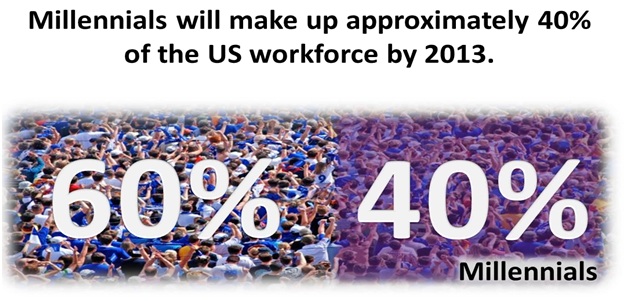Published on
How We Got Here Is Not What Will Get Us There!

Our current “skills gap”, acknowledged by the lack of qualified candidates for many skilled positions around the globe, began years ago in a time when we took having a formal education followed by hard work as the absolute recipe to fulfill the American Dream.
Between 1979 and 1994 the number of persons employed by the biggest U.S. industrial corporations that emerged during and after WWII declined by nearly a third—from 16.2 million to 11.6 million. Upstarts like Nokia, Nike, Netscape and others were leading the charge into the Information Age with few knowledge workers generating large revenues per employee. The trend of the declining Industrial Age and emergence of the Information Era was underway.
In 1990, Peter Senge popularized the learning organization concept with his book The Fifth Discipline, which opened the door to continuous learning processes beyond formal expectations from our public education system. Peter stated, “Organizations where people continually expand their capacity to create the results they truly desire, where new and expansive patterns of thinking are nurtured, where collective aspiration is set free, and where people are continually learning to learn together.”
By 1997, journalist Thomas A. Stewart, at Fortune Magazine, who professed he knew little about and a boring view of business when he joined Fortune, launched his book Intellectual Capital – The New Wealth of Organizations. His research and book described the importance of the Information Age as a Revolution and intellectual capital as the key driver. His definition of intellectual capital, “Is intellectual materials – knowledge, information, intellectual property, experience – that can be put to use to create wealth.”
Since then there have been hundreds of articles and books written on the subject of corporate intellectual capital, knowledge workers, talent and leadership development and flatter organization management. In the last decade learning and development programs for workers has exploded within HR departments and a vast industry of training vendors, providers, for profit schools and consultants.
Some executives did the math or recognized the fact of a bubble of an outgoing generation with lower numbers of experienced replacement and differences in their methods of learning. For the most part, however, corporate learning and development spending has been flat and focused on the high potentials (HiPos). This essentially is still not accepting all their workers as “talent” to be developed. This can only contribute to higher turnover costs, more vacancy time to fill critical roles, and widen the skills gap for knowledge workers.
Add to that the worst recession since the Great Depression and you have the makings of the “Perfect Storm”. That storm is the competition of smaller pools of knowledge workers to choose from (the current issue of employers searching for the perfect match before the Hi-Po talent pool empties), new tech savvy generationals but with little business experience or skills, a global shortage of managing leaders, and rapidly increasing global competition. How many people with strong work ethics will be left behind? Recent Department of Labor unemployment measurements use an asterisk in reporting to mask millions of average workers, or those with minimal technology skills, who have quit looking for jobs knowing the odds are 600 to 1 for those jobs they might qualify to obtain.
These elements add to the tectonic shifts:
- Baby boomers cohort had fewer children per family. Hence, fewer replacement workers when the traditionals (born prior to 1945) came to retirement age. Now as boomers reach retirement, at 10,000 per day, and the knowledge worker labor pool gap widens as does the skills gap accordingly.
- Our formal education system did not keep pace with technology cycle compression in turning out math and science skilled potentials for rapid growth in skills requirements. For two decades politicians and legislators created layers of bureaucratic administration, head start programs, the Department of Education and more. Billions of tax payer dollars were committed. The results, higher dropout rates, more test cheating for higher teacher performance bonuses, lower job entry skills and college grads unprepared to work in the knowledge economy.
- The Viet Nam War, the Iraqi Wars and still hanging on in Afghanistan, has consumed both talent and technology away from the private sector. This is not intended as a political statement, just the facts about loss of treasure and lives. Institutions of higher learning have done little to prepare returning vets for job roles in the new economy, but did continue to raise tuition costs and hype their athletic programs for TV dollars.
After a lengthy list of new learning models, assessment tools, an explosion of software performance support tools with cache phases, marketing spin and buzz; we are focused on trying to fix the gaps in worker knowledge with knowledge transfer and hence improved performance. We create learning content for multiple platforms more rapidly building libraries of content with a short shelf life. The pace quickens as does convergence of performance support and digital virtualization software. Soon the amount of digital information will by itself be crushing. At some point we need to ask ourselves, are we simply stuffing our employees with data that has a one-off purpose and no accumulative value? Are we providing tools with check lists or is our “asset” worth a more holistic process? Isn’t learning a process with expected outcomes and values that contribute to the good of the whole organization?
In the second paragraph of last week’s article, we illustrated there is a life process of learning beyond the formal education model. We don’t grow only from the neck up. Learning is a process that should be never ending – just ask Tiger Woods. Similarly, if you want to transform your employees and the organization it supports, you will have to do that by winning not only their minds but their hearts as well.
Author Perspective: Business




